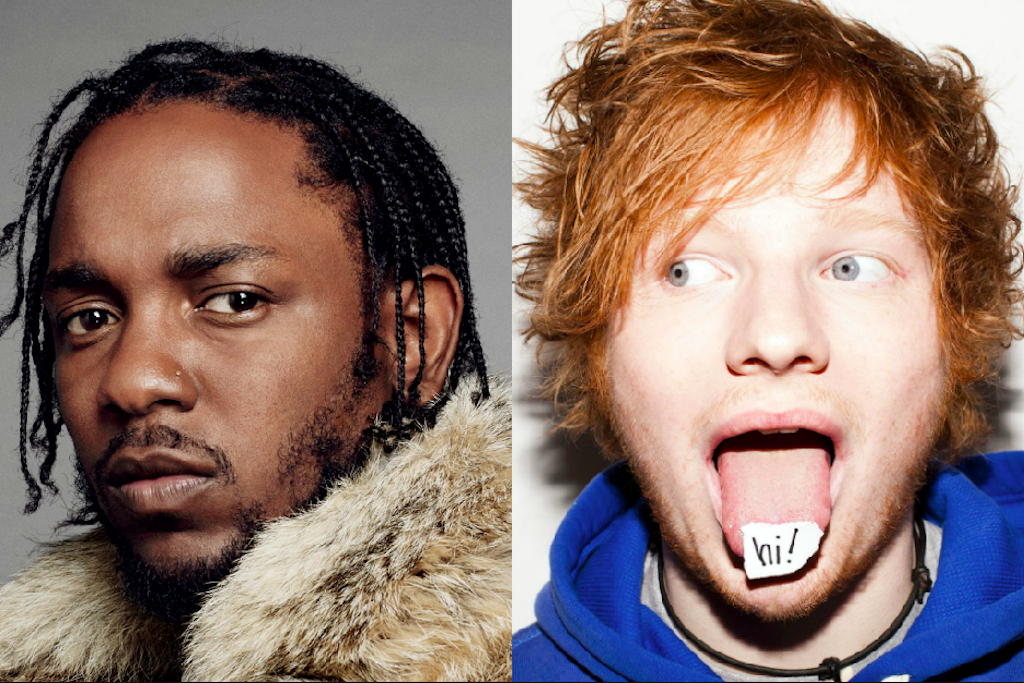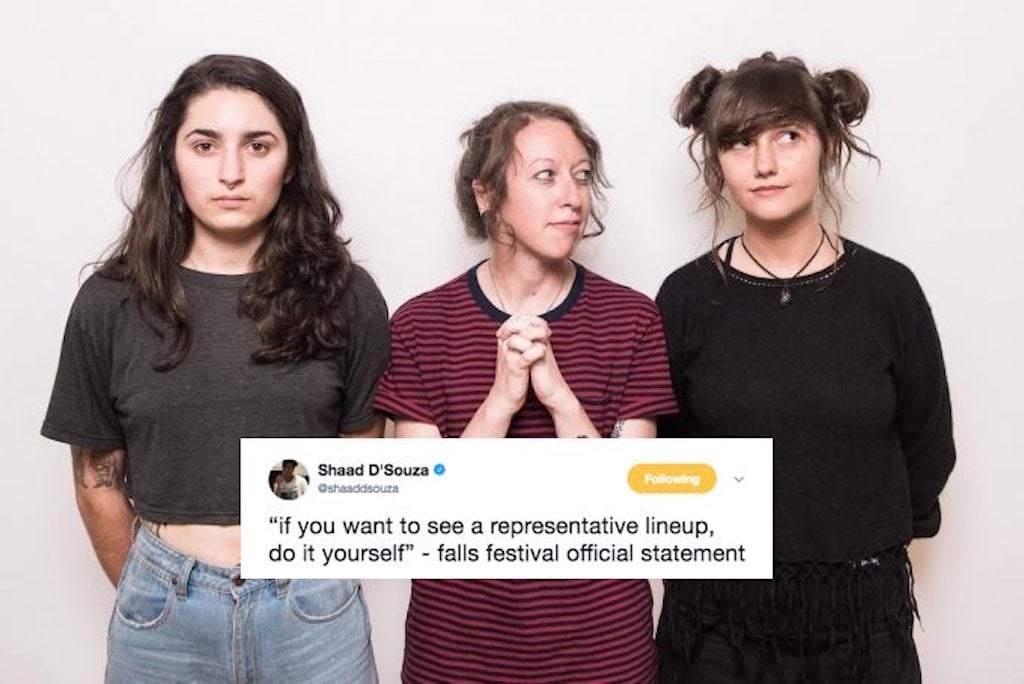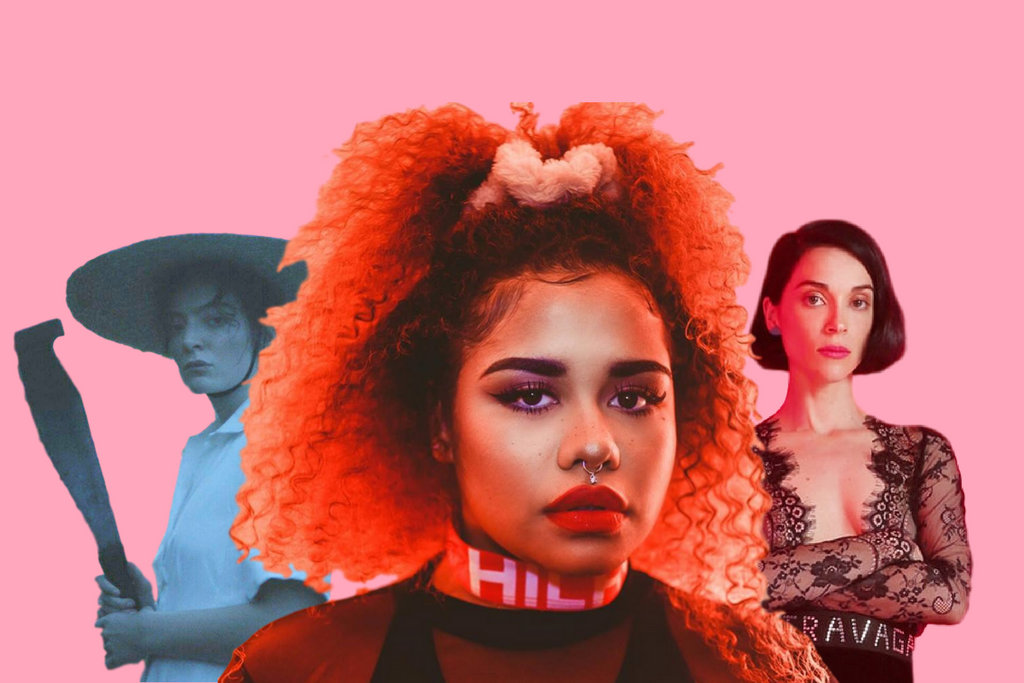Australia, We Desperately Need To Talk About Your Music Taste
In 2017 more people listened to the 'Troll' movie soundtrack than Kendrick Lamar.

Australia, we’ve got a problem. It’s your awful taste in music. For too long you’ve been getting away with streaming every Ed Sheeran song 13 billion times and backing it up with a heavy dose of Keith Urban. It’s time to sort this mess out.
Today ARIA released their official end of year charts tracking the music we bought and streamed the most in 2017. It’s bleak. Ed Sheeran’s Divide was the biggest album of the year, followed by Pink’s Beautiful Trauma and Taylor Swift’s Reputation. Swift’s high placement is actually a pretty amazing result when you consider the album was only released in November.
Three of the top 10 albums of the year were film soundtracks and the highest placing Australian was Paul Kelly all the way down at number 14. Michael Bublé’s Christmas album, released seven years ago, cracked the top 10. All up there were three Ed Sheeran albums in the top 12. Like I said, it’s bleak.
While three of the top five albums were by women (Pink, Taylor Swift and Adele), the singles chart was dominated by men. There were zero women in the top 10, which seems particularly weird considering Taylor Swift and Lorde both released massive albums in 2017.
Now look, I understand it’s tempting to dismiss this whole conversation. Plenty of you will be crying out “Who cares about the charts!”, “Leave Ed Sheeran alone!” and “Music taste is subjective, shut up you dickhead!”, which is understandable.
But here’s the thing: how and why we consume certain cultural products says a lot about us. It’s absolutely worth interrogating. The music charts aren’t a perfect indicator of our taste, but they’re pretty much the best barometer we’ve got, and when they throw up certain trends or appear out of whack with what’s going in the rest of the world it makes sense to try and understand what’s going on.
So let’s do it.
What Are The ARIA Charts And Why Should I Give A Shit?
Every week ARIA calculates single and album sales, both physical and digital, to create a list of the highest selling tunes. At the end of the year they put together all the data and publish an end of year list.
Since 2017 the charts have included streaming figures as well, though the exact method used to convert streams into album or single equivalent sales is an industry secret.
Some critics think they get more attention then they deserve, because they don’t necessarily measure objective quality, and can be heavily influenced by promotional campaigns from labels, which is valid point. But even though the ARIA charts aren’t perfect they’re the best proxy we have for measuring what kind of music Australians listen to.
If you think art and art criticism is important, then I think it makes sense to pay attention to what’s selling — whether it’s the ARIA chart, TV ratings or the box office figures. Not because you need to necessarily like everything that’s selling well, but because part of understanding how art and culture impacts society is understanding what is being consumed.
I don’t really like Ed Sheeran and I didn’t vibe the latest Taylor Swift album. But that doesn’t matter. The fact that they sold roughly a trillion albums in Australia is still interesting. The fact that they outsold other huge artists like Kendrick Lamar, Drake and Bruno Mars is even more interesting. And the fact that the Australian charts look almost nothing like the charts in the US is downright fascinating.
What Are The Standout Trends From This Year?
One of the most noticeable features of the 2017 end of year charts is how few local artists made it into the list. No Aussies feature in the top 10 and only two, Paul Kelly and Jessica Mauboy, made it into the top 20.
In 2016 there were three Australians in the top 10 and six in the top 20, including Flume, Sia, Keith Urban and the Hilltop Hoods.
Acts like Gang of Youths and Tash Sultana, who has performed to massive crowds in Australian and sold out her entire US tour, barely made it into the top 50.
When you look at the singles chart it’s even more stark. No Australian artist managed to crack the top 30, with Pnau’s ‘Chameleon’ charting the highest at number 32. Back in 2016 both Flume and Sia landed in the top 10.
The UK end of year charts, by way of comparison, include eight local acts in the top 10.
While the stats on their own are pretty interesting, they aren’t as interesting as the reason behind the dramatic shift between 2016 and 2017. Unfortunately, no one knows the exact reason and there are probably a huge range of factors behind the trend.
It could have to do with the fact that some of our biggest acts, like Flume, Sia and the Hilltop Hoods simply didn’t release any albums in 2017. Commercial radio’s reluctance to embrace local artists, even those that have sold out big concerts, is probably another factor.
But, whatever the reason, 2017 was the year Australians vanished from the music charts. And when you contrast that with the fact that local artists released a shitload of extremely good music, those statistics should be kickstarting a conversation around our industry’s ecosystem and whether it’s geared in a way that prohibits domestic acts from breaking through.
What Happened To Hip-Hop?
Ok, this is the one that has gotten me the most worked up. One of the biggest talking points in music last year was the triumph of hip-hop over pop, rock, R&B, basically all genres. In the US it became the most consumed genre of music for the first time.
When you consider 2017 saw new, critically acclaimed albums released by Kendrick Lamar, Drake, Migos and Future, it makes sense. But according to the ARIA charts Australia was immune to the rap takeover.
The only hip-hop artist to make the top 10 album chart was Kendrick with DAMN.. Coincidentally, Kendrick was also the only person of colour to feature in the top 10 as well. He was beaten by the soundtracks to Moana and the Trolls film. The fucking Trolls film outsold Kendrick.
Eminem made it to number 21, but Drake’s More Life was all the way down at number 30. And that’s it. That’s all the hip-hop in the top 30.
In the singles chart Kendrick’s ‘HUMBLE.’ was the only hip-hop track to make it, and even then we’re talking the Skrillex remix.
But when we take a look at the US Billboard charts the situation is vastly different. DAMN. made it to number one and pretty much the entire top 10 was hip-hop and R&B except for Ed Sheeran and the Moana soundtrack (which, by the way, is bloody excellent).
So what’s going on? Do Australians hate hip-hop? Again, the situation is pretty complicated. When you look at streaming only charts, like Spotify’s top 50, the lists are dominated by hip-hop artists. That suggests there might be a divergence between what people are streaming and what they’re buying, and the ARIA formula that compares the two might be configured differently to the US charts.
Mainstream Australia’s reluctant to embrace hip-hop isn’t new. Well actually to be more precise, Australia’s reluctance to embrace hip-hop made by black artists isn’t new. We have no problem with Eminem, Macklemore and the Hilltop Hoods.
In fact, Macklemore has had more number one singles in Australia than Drake, Kanye and Kendrick combined, which is kind of… insane.
The question is whether this is reflective of the average Australian music consumer, or attributable to what labels decide to promote. The music you hear on the radio, see on your Spotify playlists and read about in the media hasn’t gotten there by accident. It’s often the result of a strategy by music labels to push certain kinds of acts.
Sometimes those labels will, for reasons I can’t quite figure out, refuse to promote certain artists even if they’re blowing up in the US. That partly explains why you can have an artist like Cardi B, who has broken numerous sale records in the US and is absolutely dominating the charts over there, fail to place anywhere in the Australian ctharts.
Ok, So We’ve Got Bad Music Taste. What Now?
Each of the issues highlighted by last year’s music charts, whether it’s the lack of local artists, the huge gender disparity or our unwillingness to embrace music made by diverse artists, has its own separate root causes. But a lot of the responsibility rests with those in the industry who decide what gets made and played.
Labels, promoters and music directors have an enormous amount of power, and too often they choose to deny the problems exist rather than using their resources to fix them.
But obviously our taste in music also says something about us as people. Personally, I wish people would ditch Ed Sheeran’s songs about nothing for Kendrick, Cardi B and Drake, but I’m under no illusions. Australians love this mopey fake-ass Ron Weasley for some reason. It might have to do with the fact his bland mediocrity just chimes so well with our national culture, I don’t know.
Our uniquely boring and harmless white music taste might also say something about our society and politics. Social movements in the US like #BlackLivesMatter have had a direct influence on hip-hop and the increased attention paid to debates around race would no doubt be a factor behind the rise of hip-hop, particularly the kind of ‘conscious’ hip-hop Kendrick represents.
Even though we desperately need those same conversations in Australia we’re a long way off having them, let alone having them featured in our highest selling cultural products. For now it looks like we’re stuck with Macklemore rapping about Willy Wonka.


